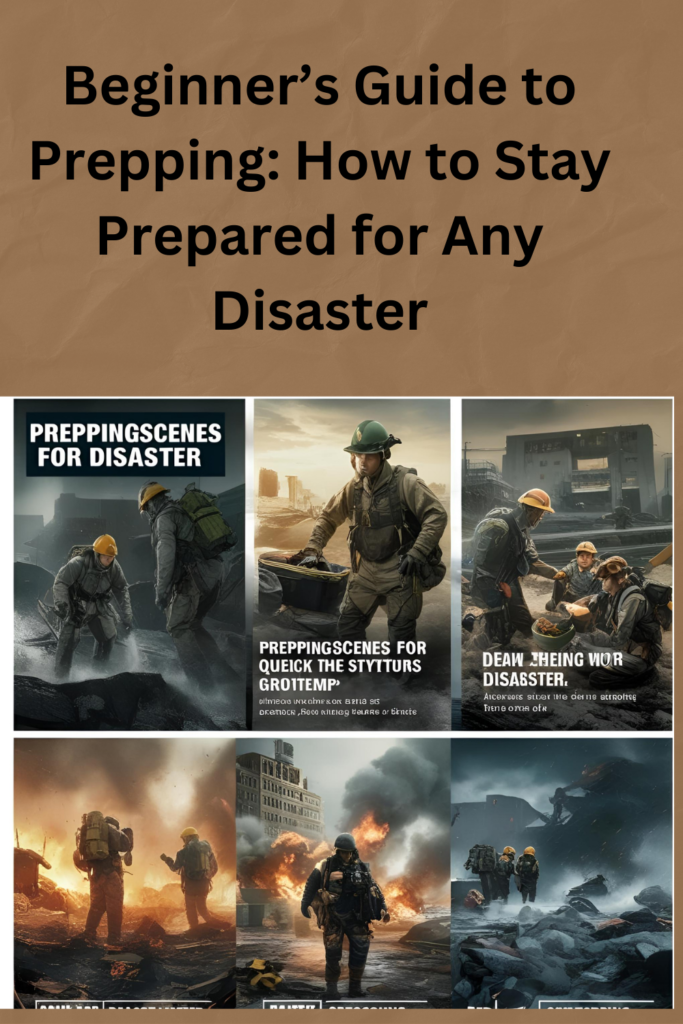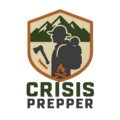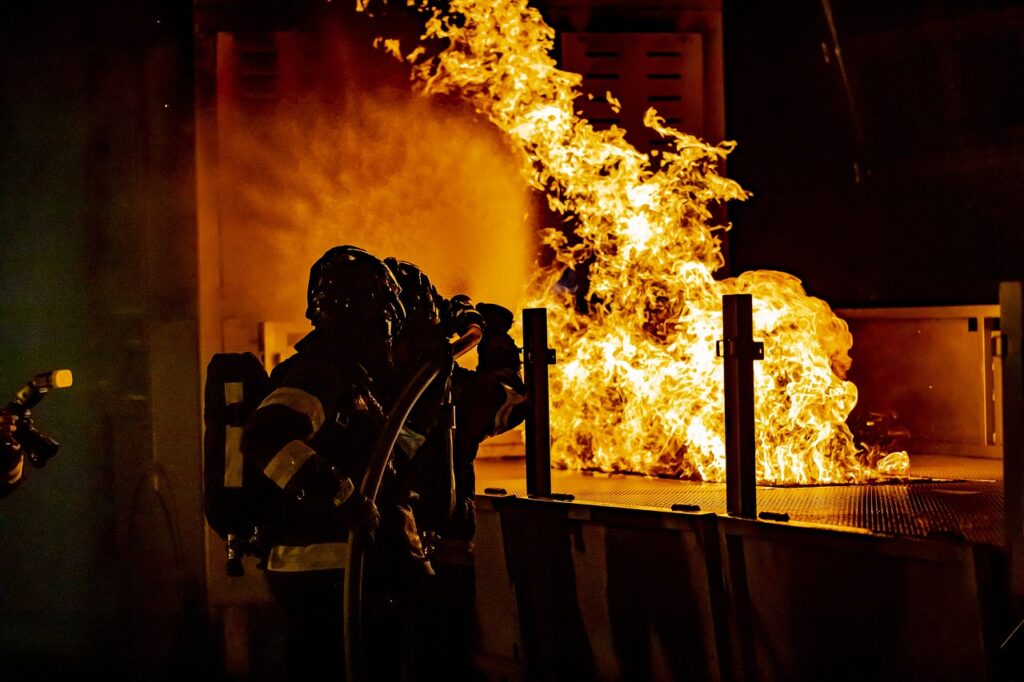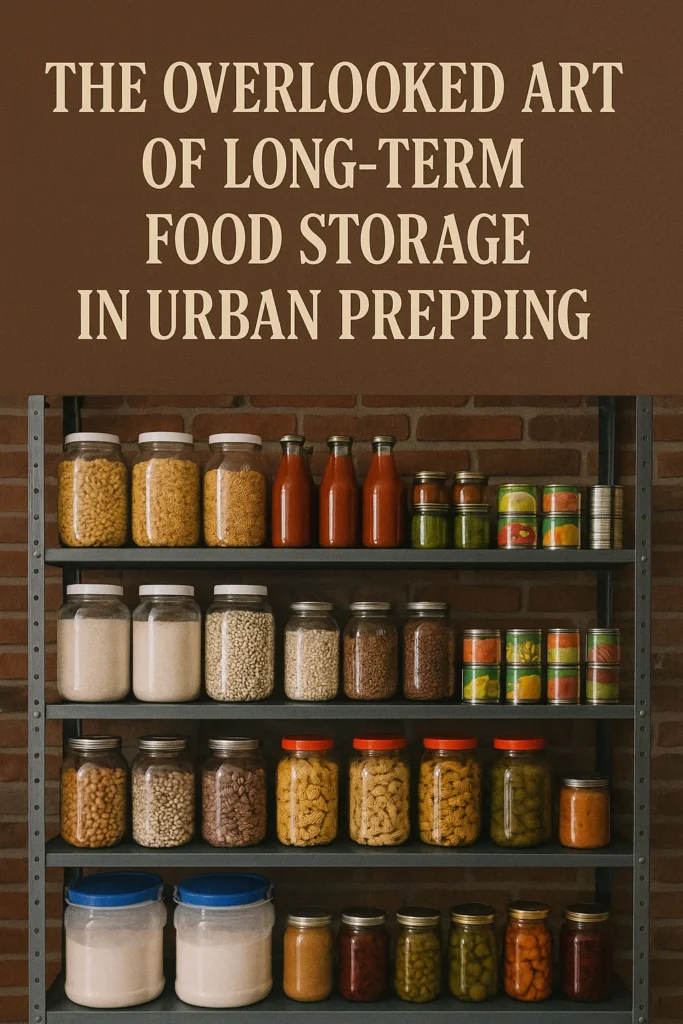7 Essential Tips for Prepping for Beginners (Stay Ready for Any Disaster)
Life is unpredictable, and emergencies can strike at any time. Prepping for beginners doesn’t have to be overwhelming. With the right plan, you can protect your family by covering essential survival steps—from building an emergency kit to mastering key survival skills. Whether it’s natural disasters, economic downturns, or power outages, being prepared makes all the difference.
Prepping for beginners may feel overwhelming, but it doesn’t have to be. By starting small and building the right habits, you can create a survival plan that works in any emergency. This guide will walk you through the essential steps every beginner should know.

Common Mistakes in Prepping for Beginners
Many new preppers make the mistake of buying gear they don’t need or ignoring basics like food and water storage. Prepping for beginners is all about focusing on essentials first and upgrading over time.
Why Prepping for Beginners Is Important
Disasters such as hurricanes, wildfires, or job losses can leave you without electricity, food, or water. The purpose of this beginner’s guide to prepping is to ensure you have the supplies and skills to survive independently for days or even weeks. Prepping for beginners is less about panic and more about peace of mind.
Step 1: Know the Risks in Your Area
Understanding your local risks helps you prepare effectively. Common threats include:
- Coastal areas: Hurricanes, floods, and storm surges.
- Dry regions: Wildfires and droughts.
- Urban settings: Power outages, civil unrest, and economic disruptions.
Check your local government websites or the FEMA preparedness guide for region-specific threats.
Step 2: Build an Emergency Kit
A well-stocked emergency kit is essential. Include the following items:
- Water – 1 gallon per person per day (minimum of 3 days). Water Storage Containers
- Food – Non-perishable items like canned goods, rice, and protein bars. Emergency Food Supply
- First Aid Kit – Bandages, antiseptics, medications. First Aid Kit
- Flashlight & Batteries – Power outages are common in disasters. LED Flashlight
- Hygiene Items – Soap, toothpaste, toilet paper.
- Important Documents – IDs, insurance papers in a waterproof bag.
Step 3: Make a Family Emergency Plan
A strong emergency plan ensures everyone knows what to do.
- Set a meeting spot – Choose one near home and another outside the city.
- Emergency contacts – Keep a list of phone numbers.
- Pet preparedness – Store food, water, and supplies for your pets.
- Practice drills – Conduct practice evacuations to familiarize your family with the plan.
Step 4: Stock Up on Extra Food and Water
Beyond your emergency kit, stockpile supplies for longer-term survival:
- Canned goods and dried food – Beans, rice, pasta, soup.
- Energy sources – Nuts, protein bars.
- Milk alternatives – Long-shelf-life milk or powdered milk.
For water, invest in a water filtration system or purification tablets.
Step 5: Learn Basic Survival Skills
Knowing how to survive without modern conveniences is a key aspect of beginner’s guide to prepping. Learn these skills:
- Starting a fire – Use lighters, matches, or a fire starter. Fire Starter Kit
- CPR and First Aid – Take a certified course.
- Navigation – Learn to use a map and compass.
- Off-grid cooking – Try a camping stove.
Step 6: Be Physically and Financially Ready
Preparedness isn’t just about gear—it’s about resilience.
- Physical fitness – Endurance and strength help in evacuations
- Emergency savings – 3–6 months of expenses set aside
- Insurance coverage – Home, health, and auto to reduce stress in disasters
Step 7: Connect with a Prepper Community
Prepping for beginners becomes easier with support:
- Local prepper groups – Share skills and resources
- Online communities – Survival forums and blogs
- Bartering networks – Trade tools, food, and skills when needed
Final Thoughts
Prepping for beginners isn’t about living in fear—it’s about being ready. Start small: build a kit, create a plan, and develop survival skills. With steady effort, you’ll gain confidence and ensure your family can face any disaster.
Additional Resources
ALSO READ : DIY Food Preservation at Home: A Complete Beginner’s Guide



Pingback: The Cheapest Way to Start Prepping Without Wasting Thousands on Gear
I appreciate the effort that goes into creating high-quality content, and this post was no exception. The insights and information were top-notch and made for a really engaging read. Keep up the great work!